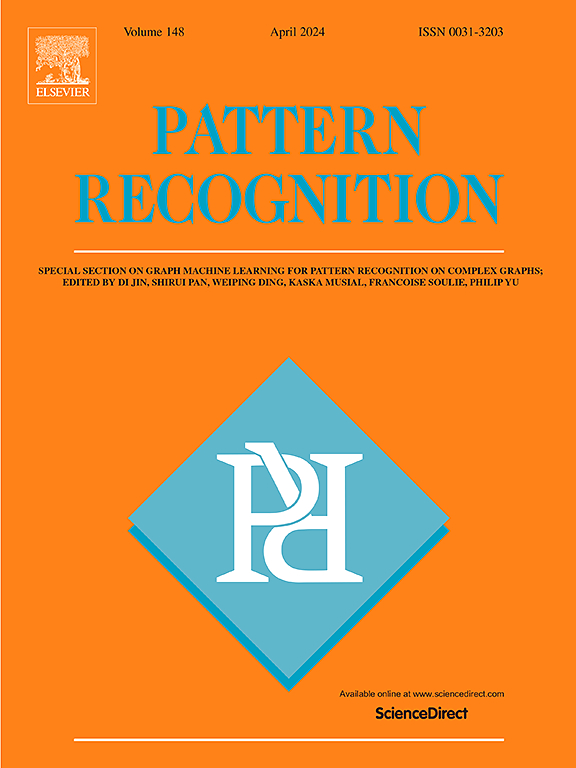wan - dpc:基于加权自适应近邻的密度峰查找聚类
IF 7.5
1区 计算机科学
Q1 COMPUTER SCIENCE, ARTIFICIAL INTELLIGENCE
引用次数: 0
摘要
密度峰值聚类(DPC)算法及其大多数变体都无法同时识别密集和稀疏聚类的聚类中心。此外,DPC的“多米诺效应”在其变体中也无法完全避免。尽管ANN-DPC (Adaptive Nearest Neighbor DPC)能够检测到密集和稀疏聚类的聚类中心,但其自适应的点近邻可能会在局部密度、聚类中心和聚类中引入偏差。针对ANN-DPC算法的局限性,提出了加权自适应最近邻DPC算法(wan -DPC)。wan - dpc的主要贡献有:(1)通过对点的近邻和远近邻进行加权,定义了一个新的加权局部密度;(2)提出了一个校正因子来依次检测聚类中心;(3)利用最近邻关系和加权隶属度提出了一种两步分配策略。在基准数据集上的大量实验证明了wan - dpc优于同类算法。本文章由计算机程序翻译,如有差异,请以英文原文为准。

WANN-DPC: Density peaks finding clustering based on Weighted Adaptive Nearest Neighbors
DPC (Density Peak Clustering) algorithm and most of its variants are unable to identify the cluster centers of dense and sparse clusters simultaneously. In addition, the “Domino Effect” of DPC cannot be entirely avoided in its variants. Despite ANN-DPC (Adaptive Nearest Neighbor DPC) being able to detect cluster centers of dense and sparse clusters, its adaptive nearest neighbors of a point may introduce bias in the local density, cluster centers and clustering. To address these limitations of ANN-DPC, the WANN-DPC (Weighted Adaptive Nearest Neighbor DPC) algorithm is proposed. The key contributions of WANN-DPC are as follows: (1) A novel weighted local density of a point is defined by weighting its close and far neighbors, (2) a correction factor is proposed to detect cluster centers in turn, and (3) a two-step assignment strategy is presented utilizing nearest neighbor relationships and weighted membership degrees. Extensive experiments on benchmark datasets demonstrate the superiority of the WANN-DPC over its peers.
求助全文
通过发布文献求助,成功后即可免费获取论文全文。
去求助
来源期刊

Pattern Recognition
工程技术-工程:电子与电气
CiteScore
14.40
自引率
16.20%
发文量
683
审稿时长
5.6 months
期刊介绍:
The field of Pattern Recognition is both mature and rapidly evolving, playing a crucial role in various related fields such as computer vision, image processing, text analysis, and neural networks. It closely intersects with machine learning and is being applied in emerging areas like biometrics, bioinformatics, multimedia data analysis, and data science. The journal Pattern Recognition, established half a century ago during the early days of computer science, has since grown significantly in scope and influence.
 求助内容:
求助内容: 应助结果提醒方式:
应助结果提醒方式:


